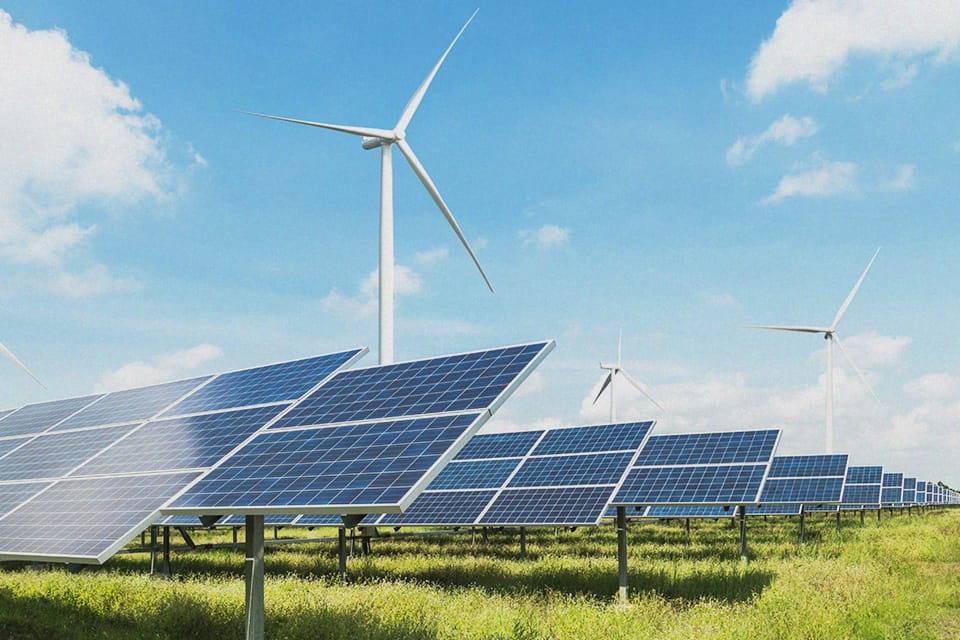
Holiday Bonus Episode: Safety Tips You Need This Season | Risk Matrix Episode 122
THE RISK MATRIX Cutting-edge podcast on occupational safety and risk management. Hosted by industry titans: JAMES JUNKIN, MS, CSP, MSP,…

Cities, counties, and states nationwide are taking charge of how they deliver power to their residents. This shift isn’t just about control—it’s also about improving efficiency, enhancing reliability, and often reducing costs in the new, innovative realm of municipality electricity.
In some regions, communities have seen significant savings on their energy bills by switching to municipal-run systems. However, challenges exist; these initiatives come with high initial investment costs and complex regulatory environments.
This article explores the move towards renewable energy and sustainability, its inherent challenges, and the future of municipal electric utilities.
Municipalities can take clean energy and sustainability into their own hands by investing in renewable energy projects. This strategy slashes carbon emissions, reduces power prices, and creates jobs locally, which is beneficial all around.
Renewable energy is a game-changer for municipalities. By generating their own clean power, they can:
On top of being eco-friendly, renewable energy initiatives generate employment and revitalize community economies.
Of course, implementing renewable energy does come with challenges, such as the following:
However, municipalities have successfully faced similar obstacles before through strategic planning and teamwork.
There’s been a substantial shift towards electric power for several reasons, including the following:
The electricity grid is getting smarter by the day, thanks to advancements, such as:
Municipal utilities are also building new business models to stay in the game. They’re finding fresh ways to make money, like:
Municipal utilities are also building new business models to stay in the game. They’re finding fresh ways to save money, such as:
Municipal utilities can stay ahead of their customers’ and communities’ needs by expanding what they offer. Being proactive instead of waiting to react makes all the difference.
Of course, this is an ongoing process. Preparing for the future takes planning, investment, and collaboration. Municipal utilities need to:
Though it’s challenging work, the payoff makes it worthwhile. Municipal utilities that adopt innovation and adapt to changes are better positioned for long-term success.
The outlook is encouraging for electric utilities as municipalities spend money wisely and form the right partnerships. By doing this, they can supply steady and clean energy.
Using electricity aggregation can significantly reduce a municipality’s energy expenses and support sustainability efforts.
With municipal aggregation, local governments purchase electricity on behalf of the people living and working in their area. This collective approach helps them snag lower rates from power suppliers, benefiting everyone.
The step-by-step process is as follows:
By following this straightforward process, communities stand to gain a lot.
In terms of advantages, municipal aggregation programs can:
Supporting aggregation can help residents and businesses meet their community’s energy goals.
Of course, not all aggregation programs are created equal. Municipalities need to do their homework to choose the right one. Some key factors to consider:
By thoroughly exploring their choices, municipalities can set up an aggregation program that truly meets their community’s needs.
People count on their local utility company to keep the lights on and energy bills affordable. This isn’t a small task; it needs ongoing attention and funding.
First and foremost, municipalities need to prioritize the maintenance and upgrade of their electricity infrastructure. This includes:
Fixing power issues isn’t glamorous, but it’s crucial. By putting money into their infrastructure now, towns can cut down on power outages and keep the lights on for everyone.
Obviously, reliability is only half the equation. Affordability matters too. That’s where cost control strategies come in. Municipalities can:
By managing costs ahead of time, cities can keep water and utility bills low for their residents.
However, balancing reliability and affordability is easier said than done. It requires careful planning, budgeting, and communication. Municipalities need to:
Striking a balance is tough, yet it is crucial if for a utility to thrive in the long run.
At the end of the day, ensuring reliable and affordable electricity for municipalities is a team effort. It requires collaboration between utility staff, local leaders, and the community at large. But when done right, it can pay dividends for years to come – in the form of a stronger, more resilient, and more equitable energy future for all.
A successful municipal utility doesn’t focus only on reliable service or low rates – it stresses community engagement.
The people who live and work here aren’t merely consumers; they’re deeply involved stakeholders interested in local energy choices. When allowed to engage, they can be incredibly supportive partners.
Why is community participation critical? First off, it:
Involving the community helps make utilities more responsive, accountable, and fair for everyone.
However, community engagement won’t happen by default. It requires deliberate efforts in reaching out and educating the public, including the following strategies:
We need to meet people where they are and make it super easy for them to engage with us.
But engagement isn’t just about sharing information – it’s about listening and responding to feedback. Municipalities need to:
When they listen to their residents and use that feedback in making decisions, they can gain trust and support for new energy projects.
Getting the community involved in decisions about municipal electric services isn’t just ethical—it’s smart. This approach helps build a fair, sustainable, and resilient energy system that benefits everyone.
Municipality electricity is about much more than just lighting up homes; it’s a big step towards sustainability, saving money, and empowering communities.
Thanks to technological advances, the way they handle energy is evolving. Programs now adjust to market trends before they even happen, setting the stage for a safe and eco-friendly electrified future.
However, knowing how to proceed will only get you so far. You need a safety and sustainability solution that addresses the unique obstacles municipalities face when delivering energy reliably and responsibly.
Consider working with us to design a program that promotes sustainability and helps you build a stronger relationship with your community.
Contact us today to learn more.


THE RISK MATRIX Cutting-edge podcast on occupational safety and risk management. Hosted by industry titans: JAMES JUNKIN, MS, CSP, MSP,…

THE RISK MATRIX Cutting-edge podcast on occupational safety and risk management. Hosted by industry titans: JAMES JUNKIN, MS, CSP, MSP,…
We’ll send you practical and insightful supply chain risk management info that can benefit your business. Plus, important company updates that keep you in the loop.
